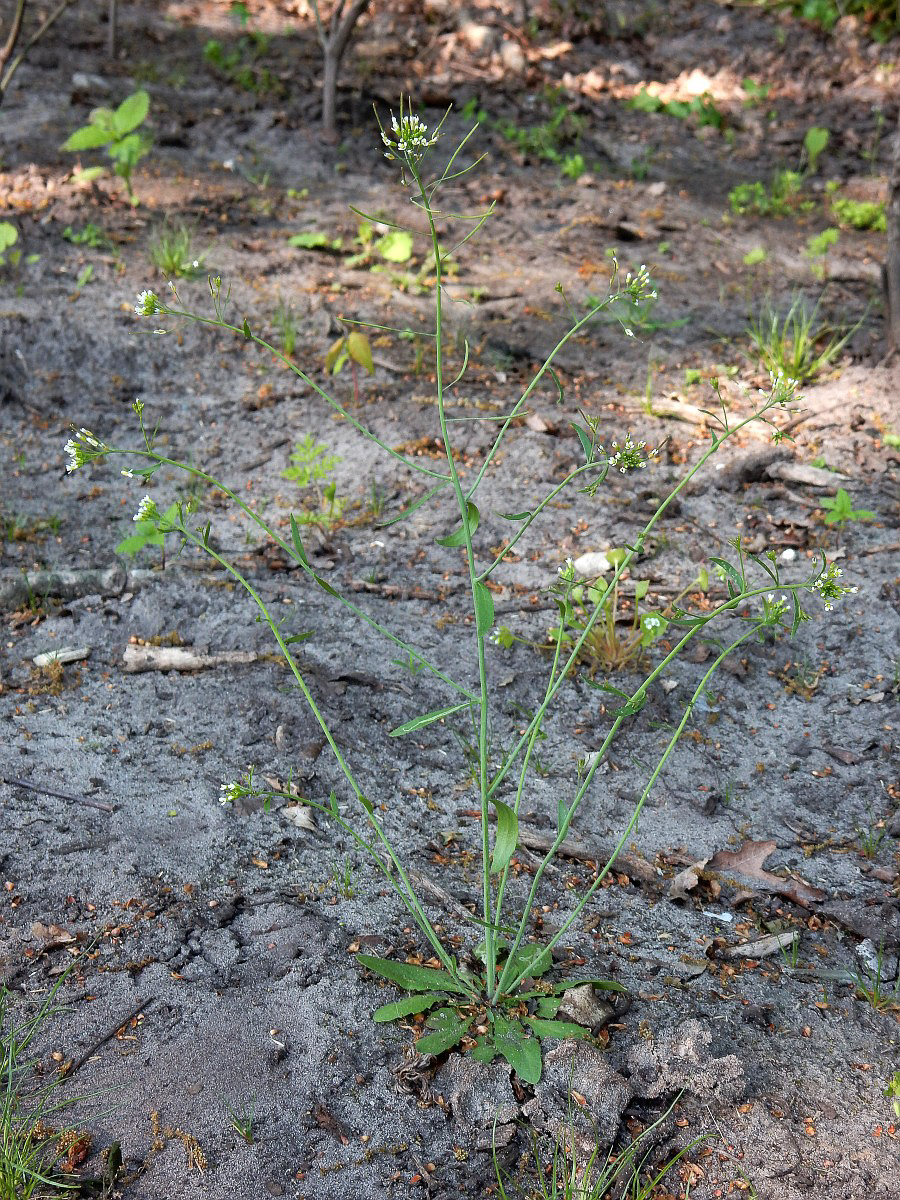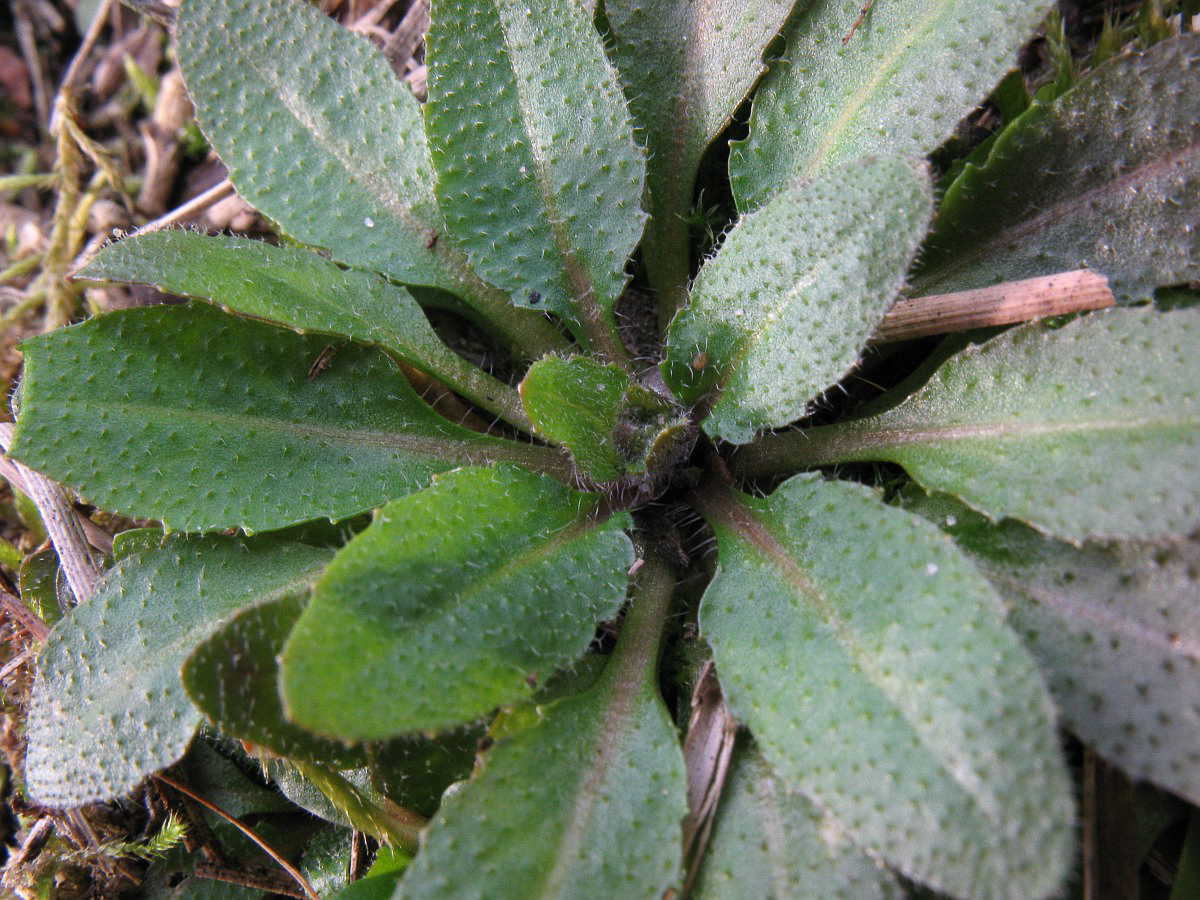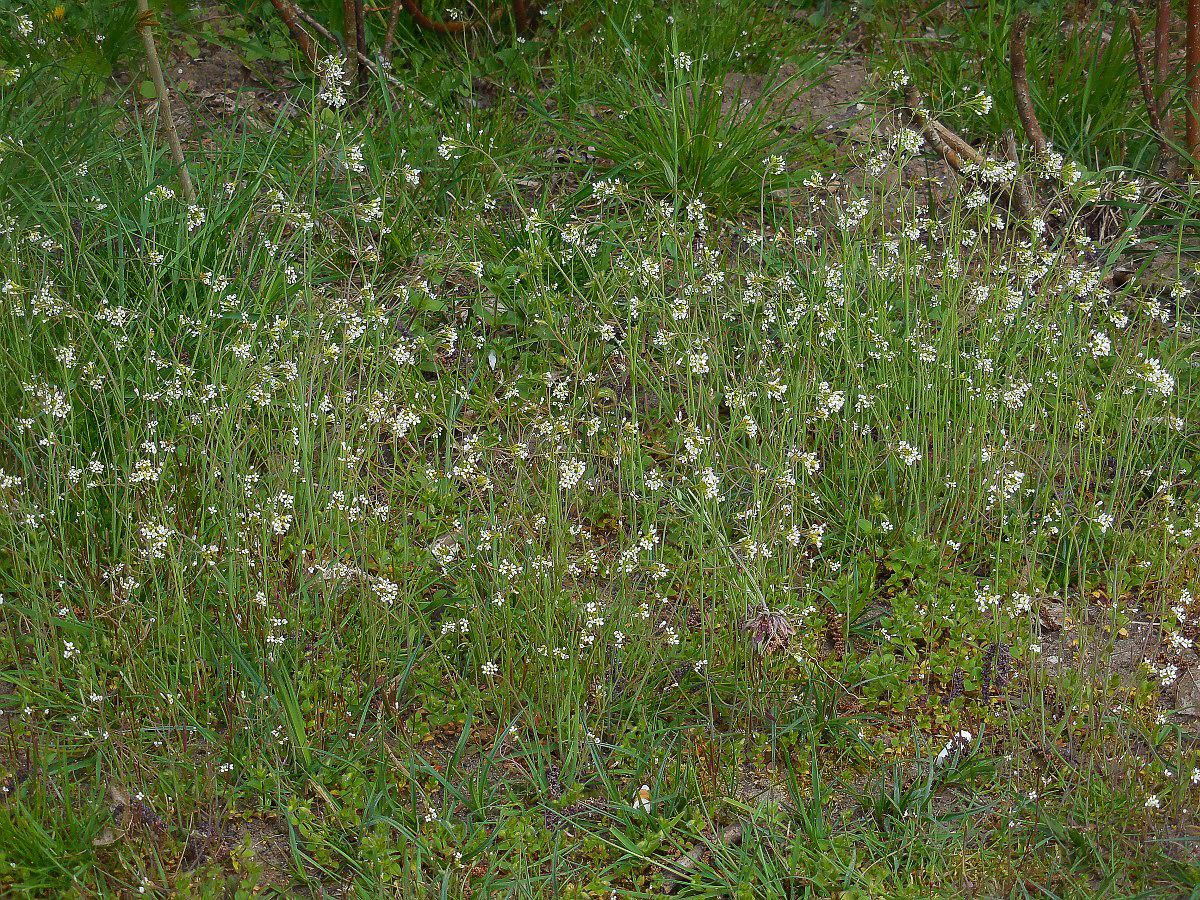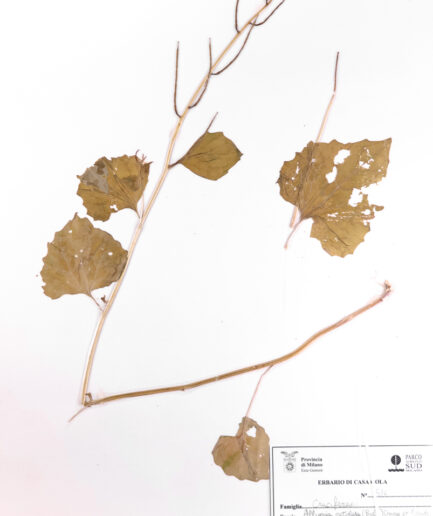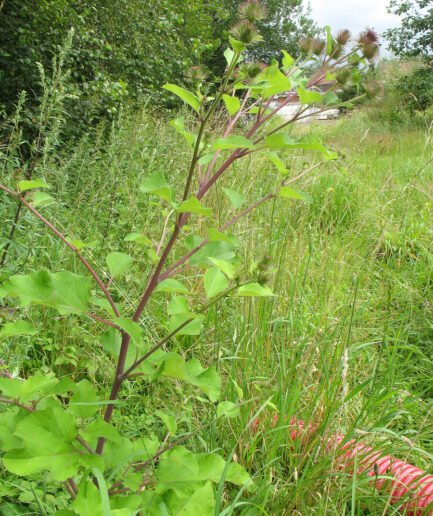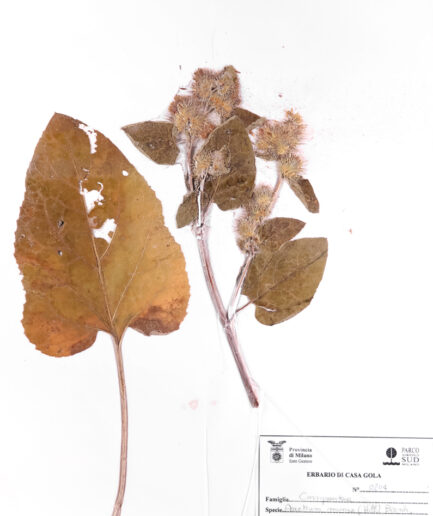Common Thale Cress
Scientific name: Arabidopsis thaliana (L.) Heynh.
Family: Brassicaceae
MORPHOLOGY
Growth habit and size: Annual plant with a short lifecycle, up to 50 cm tall.
Stem: Erect, slender, often branched stems, slightly pubescent.
Leaves: Leaves arranged in a basal rosette, with short petioles; lanceolate, sessile, acute, entire or toothed, hairy with scattered hairs; few or absent cauline leaves.
Flowers: Very small flowers, with short pedicels, white in color, born along the upper part of the stem and at the apex; have 4 sepals and 4 free petals; blooms twice, from January to April and from August to October.
Fruits and seeds: The fruits are thin, glabrous and curved siliques with a midrib; inside there are 2 cavities containing about 30 ovoid seeds that turn orange when mature.
DISTRIBUTION AND HABITAT
Widespread throughout Italy in cereal fields, vegetable gardens, on rocks, and old walls, at altitudes between 0 and 2,000 m.
USES
This plant is the queen of model organisms, extensively used in experimental research. Geneticists have learned from it how to protect wheat from diseases, how to ripen tomatoes, and even how to double the yield of seeds for rapeseed oil production. Its small size, rapid growth cycle, and small amount of DNA make it easily manageable for genetic analysis. Each plant takes only 6 weeks to grow and produce 5,000 seeds. Botanists can extract genes from it and observe the effects within a few weeks. Most importantly for genetics, this plant’s genome is unusually compact. Its 115 million base pairs of nucleotide building blocks make up 5 chromosomes and include about 26,000 genes. This makes it 30 times smaller than the human genome and many times smaller than the genomes of most plants, including crop plants. This small wild herb is the first plant to have its genome completely sequenced. A global consortium of botanists crowned a decade-long effort by publishing its genome in the journal Nature. Researchers hope to get vital insights into the genetic secrets of all plants, helping scientists transform crops so that the world can be fed without harming the environment. It has been found that about 200 genes resemble human genes linked to diseases, including genes for DNA repair, which cause cancer when damaged, and others linked to aging. A Danish biotech company, Aresa, has genetically modified Arabidopsis thaliana so that its petals turn red when the plant comes into contact with nitrous oxide nitrogen dioxide (NO2), a substance that evaporates from buried landmines.
INTERESTING FACTS
In 1777, British botanist and pharmacist William Curtis described Arabidopsis as a plant “of no particular utility or virtue”. The first mutant of Arabidopsis was identified by Alexander Braun in 1873, known today as Agamosus and the responsible gene was cloned in 1990. Friedrich Laibach published the number of chromosomes of Arabidopsis in 1907 and proposed using the plant as a model in 1953. His student Erna Reinholz described the first collection of Arabidopsis mutants generated using X-ray induced mutagenesis in her thesis in 1945. In 1964, the Arabidopsis Information Service newsletter was created, and the first International Arabidopsis Conference was held in Germany in 1965. In the 1980s, Arabidopsis began to be used worldwide in laboratory research, becoming a model organism for plant genetics, replacing maize. Thanks to its adoption as a model organism, Arabidopsis was the first plant to have its genome sequenced through an international effort by numerous research groups. The first draft was published in 2000, and the DNA sequencing of this species was completed in 2001. Today, thousands of research groups worldwide focus their studies on this plant.
Photo: Under a free license from Saxifraga, Ed Stikvoort, Rutger Barendse, Jan van der Straaten


